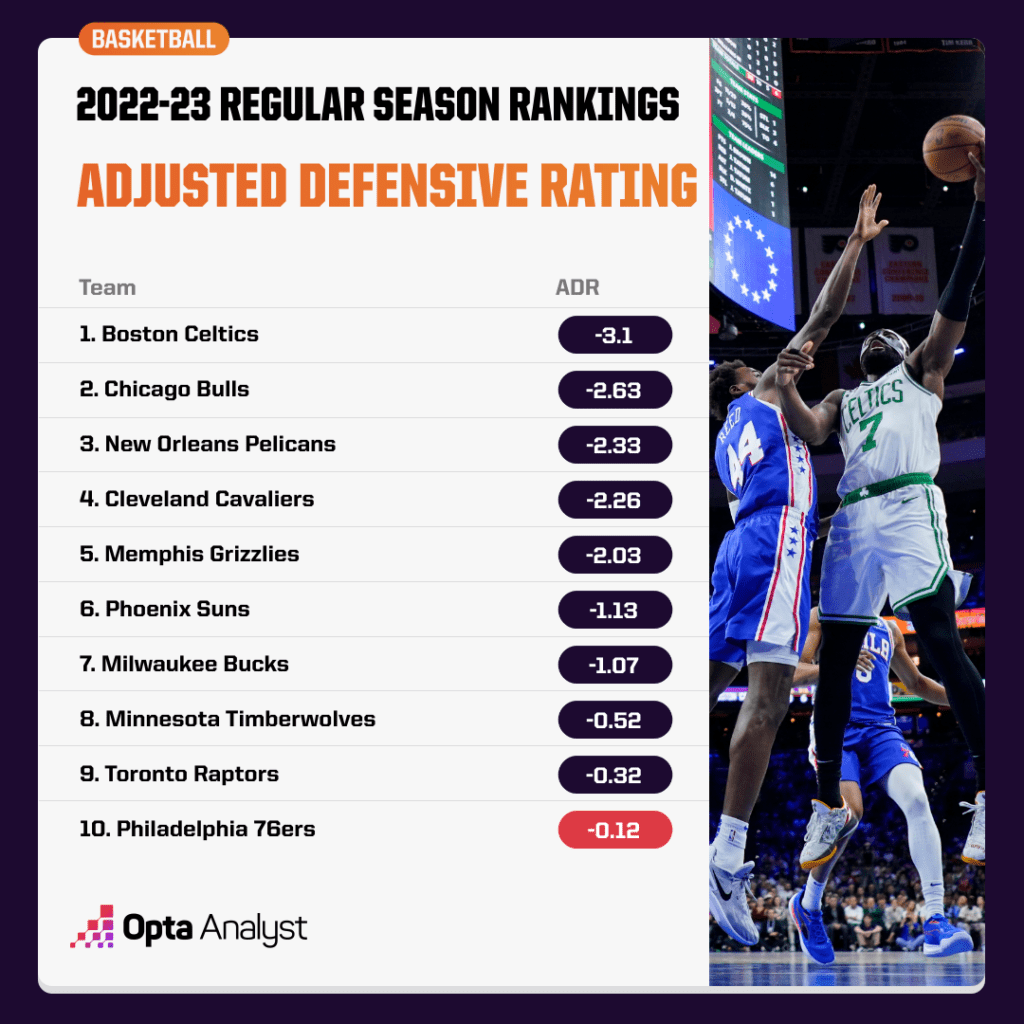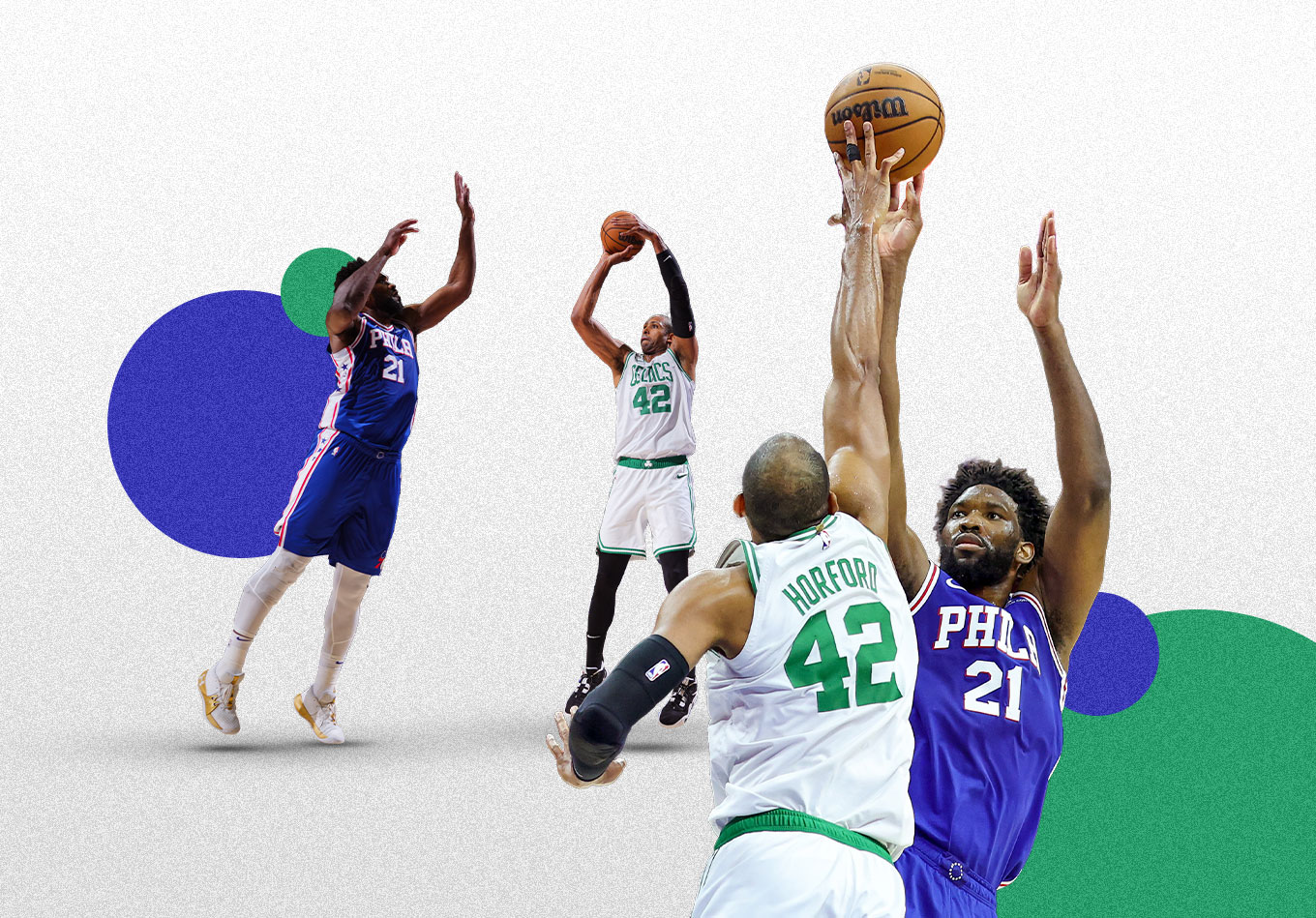Professional sports are weird about age. When an athlete is in their mid-30s, regression is expected from them. You can’t do the same things in your mid-30s that you used to be capable of in your late 20s/early 30s.
Someone forgot to tell Al Horford about this aging curve. Just shy of his 37th birthday, Horford is posing the same issues for Joel Embiid that he did back in the 2018 playoffs when he was still just 31.
How in the world is he doing this to the NBA MVP?
We’ve dug into the Game 4 tape to find out.
The Embiid Stopper
To be fair, Horford has shown some signs of aging during this postseason. Last round, Trae Young was able to find some success against him later in the series after he had acclimated to the Boston Celtics’ defensive coverage and realized how he could exploit Horford’s decreasing lateral agility.
Even in this series, James Harden has been able to blow by Horford off the dribble when given the opportunity. But just because he is no longer quick enough to contain guards, doesn’t mean he still isn’t a valuable big-man defender.
We alluded to this earlier, but Horford first made his bones as the world’s leading expert on how to slow down Embiid when the two bigs crossed paths in the 2018 postseason. It was there (coincidentally also in the conference semifinals) that Horford held Embiid to 12-of-33 shooting from the floor (36.4%) and five turnovers in nearly 23 minutes of being matched up on him (per NBA.com).
Embiid is a tough cover because he combines Shaquille O’Neal-like power and force with Hakeem Olajuwon levels of skill and quickness. Horford is the rare big man who can match Embiid in size, strength and speed while also not falling prey to his foul-baiting tactics.
(Sidebar: Something coaches always emphasize on defense is the practice of “showing your hands” as a defender. The referee is more likely to call a foul on you when he can’t see what you are doing with your hands because he will assume you are using them to impede the ball handler’s progress toward the rim. Horford is one of the best in the league at making sure his hands are out in the open for the referee to see.)
In this series, Horford has guarded Embiid for nearly 22 minutes so far, and during that time, he has held him to 16-of-37 shooting (43.2%) from the floor and five turnovers. That’s not as impressive as his 2018 shutdown job, but it is still a far cry from Embiid’s usual efficiency (he converted 54.8% of his shots from the floor during the regular season).
And in the back half of Game 4, Horford’s efforts on that end were paramount to the Celtics’ near 16-point comeback.
So much of the Philadelphia 76ers’ offensive success rests on Embiid’s ability to score from the elbow/midpost area or to create power plays from there by drawing a second defender.
Horford’s ability to hold his own against Embiid and minimize the amount of help his teammates needed to send in that direction played a massive role in Boston derailing the 76ers’ offense – holding them to just 24 points in the fourth quarter and overtime combined.
Pulling Embiid out of the Paint
Everyone has an idea of what Horford has been able to do to Embiid with his defense over the years, but what often gets lost in the sauce is how tough a matchup he is for Embiid on the other end too.
The bedrock of Philadelphia’s defense (10th in our adjusted defensive rating during the regular season) is its ability to funnel would-be penetrators into the fly-swatting tentacles of Embiid. On the season, Embiid was tied for 19th (plus-0.9) in our catch-all defensive metric defensive DRIP (minimum 1,000 minutes played) and 12th in block percentage (4.6%).

Those are impressive marks on their own, but in the postseason, he is known to ramp up his defensive intensity to another level. In Game 2 of the series (his first game back from a sprained knee), Embiid rejected five shots in less than 27 minutes of action.
Simply put, Embiid is a great paint protector and is more than capable of altering and deterring a high volume of shots near the rim. But the one stipulation to that is for him to do that, he needs to be, you know, near the rim.
That’s where Horford becomes such a thorn in the MVP’s side. Thanks to his shooting ability (a career 37.4% 3-point shooter), the Celtics can play a true five-out lineup. We say “true” five-out lineup because they can play a lineup in which all five players are not only standing behind the 3-point line, but are also good enough shooters to make you pay for leaving them open (some teams run a five-out offense with one or two non-shooters on the floor).
These five-out lineups put Embiid in a real bind. If he sags off Horford to help out in the paint, he runs the risk of giving up a relatively open 3-pointer to a proficient 3-point shooter. So he’s got to be mindful that he keeps a manageable distance between him and Horford.
The problem with that is that many of the 76ers’ other defenders (namely Harden, Tyrese Maxey and Georges Niang) struggle to keep the ball in front of them and often get beat at the point of attack. Look what happens when Harden is guarding Marcus Smart with Embiid on Horford, who is in the corner:
Do you see the dilemma here? Embiid can’t sag off Horford because he doesn’t want to give him a 3, but when he doesn’t sag off Horford, his teammates get beaten off the dribble and forfeit high-value shots at the rim. It is quite the basketball conundrum.
On top of that, Horford isn’t merely just a spot-up shooter on offense. You can’t just run him off the line with a fly-by closeout. He can put the ball on the floor, attack closeouts, and extend/capitalize on advantages when it is appropriate to do so.
In this next clip, Horford sees that Embiid is closing out to Malcolm Brogdon on the corner – thereby leaving the paint unattended to – and puts the ball on the deck for a powerful finish.
Embiid is clearly the superior player to Horford. But as we’ve been hammering home all postseason, the playoffs are all about matchups – and Horford is the perfect foil for Embiid.
Philadelphia won Game 4, but the problems Horford presented to Embiid and this 76ers team made it so that victory was a narrow escape instead of a leisurely lap. The Celtics willed their way back from down 16 to force overtime, and they would have won, too, had it not been for Harden and his late-game heroics (and Smart being a hair late on the potential game-winner).
The 76ers should feel fortunate to have come away with that win and be tied 2-2 with the Celtics. But rest assured, if Horford keeps up his current two-way play, Philadelphia is going to need a lot more than luck to steal this series.
Don’t forget to follow us on Twitter.
